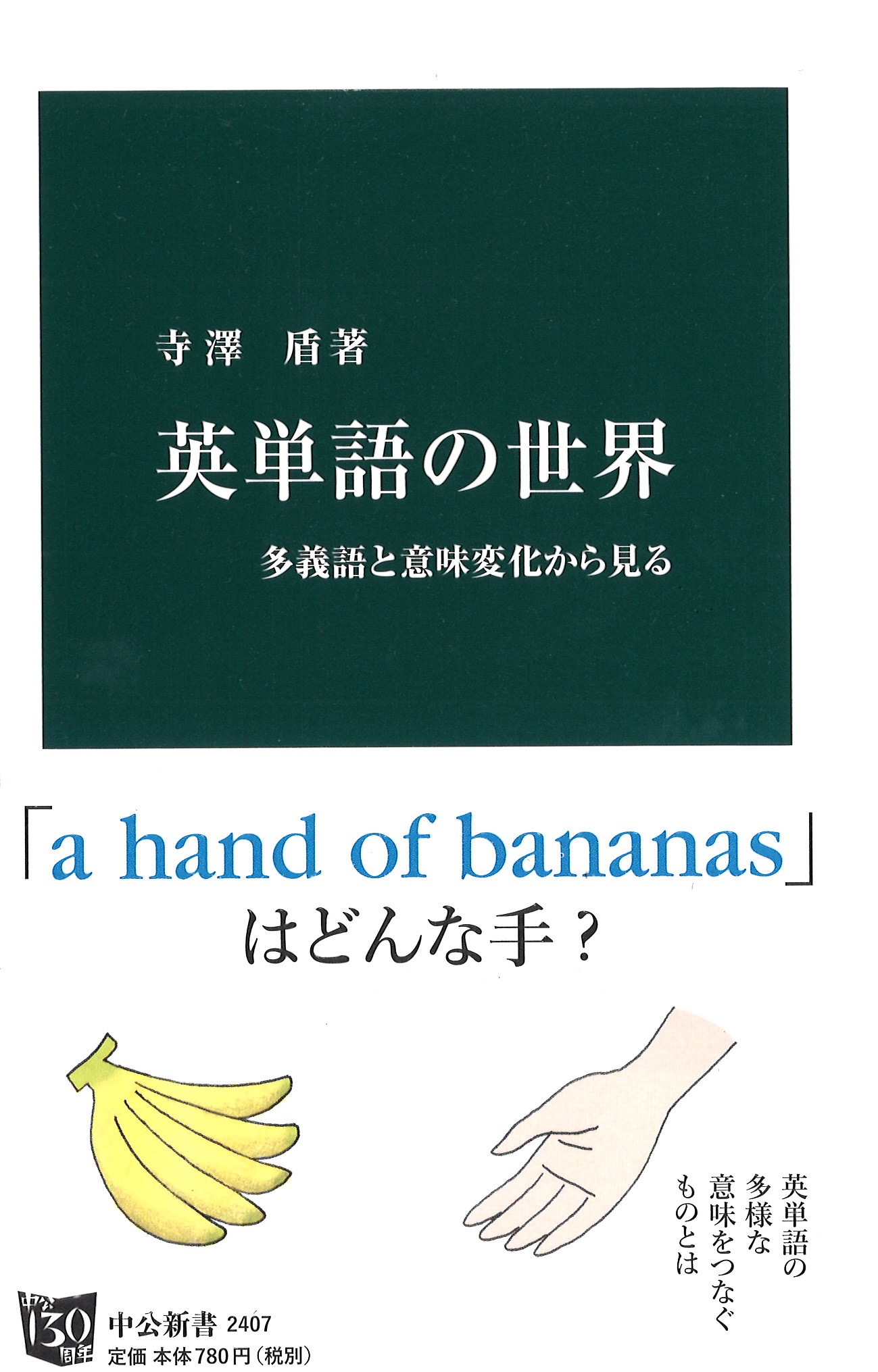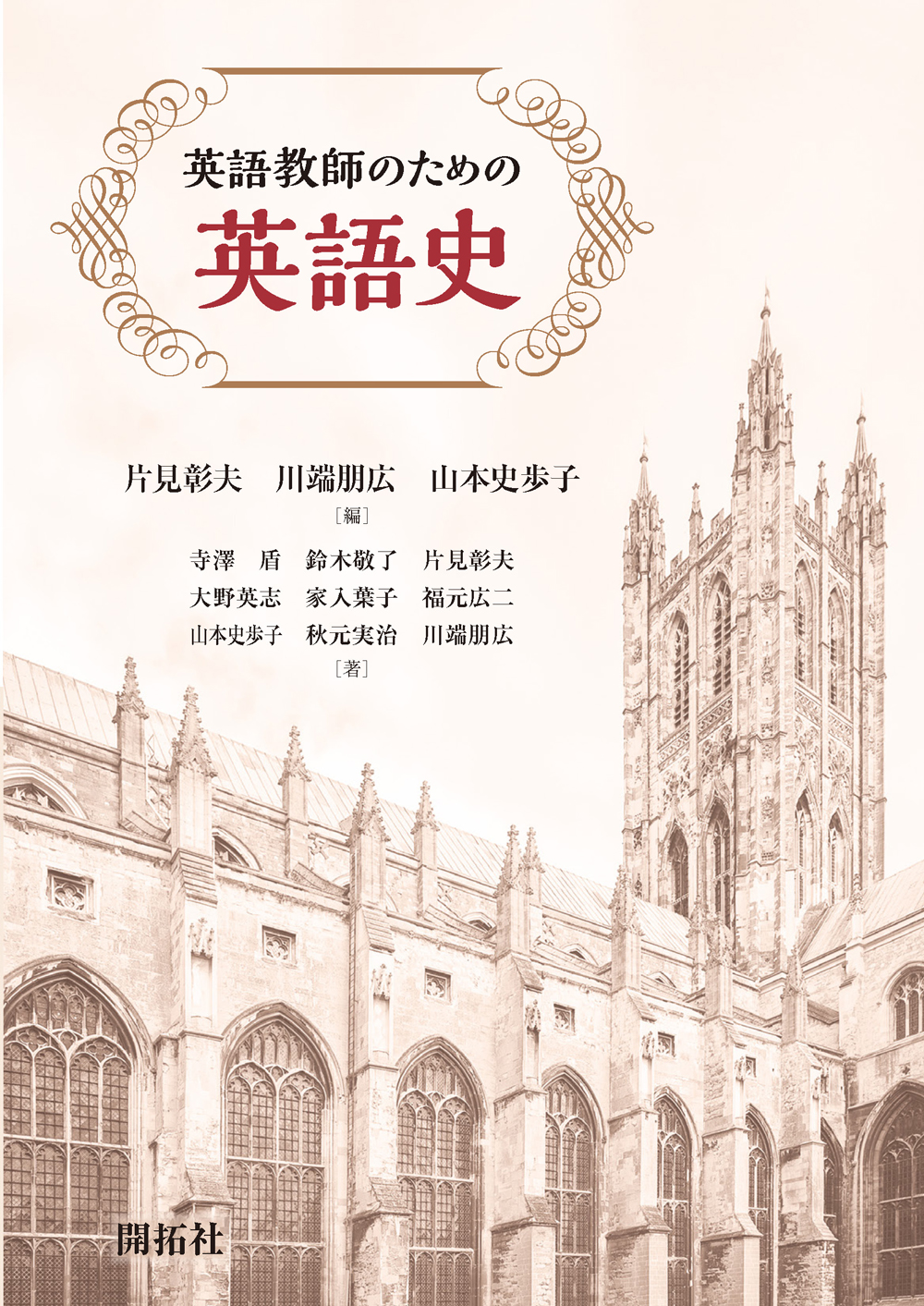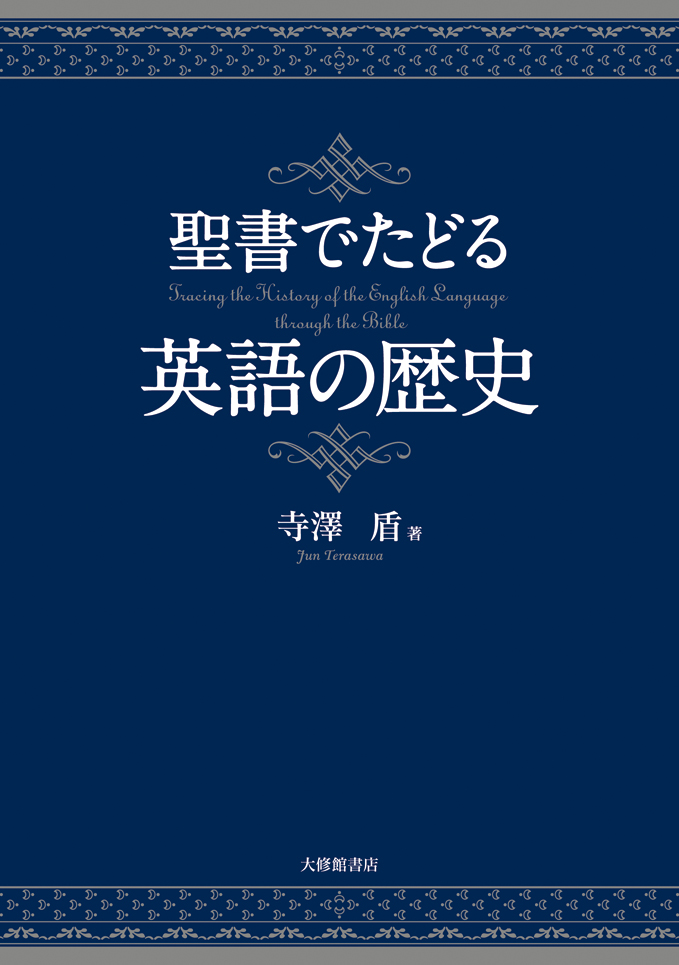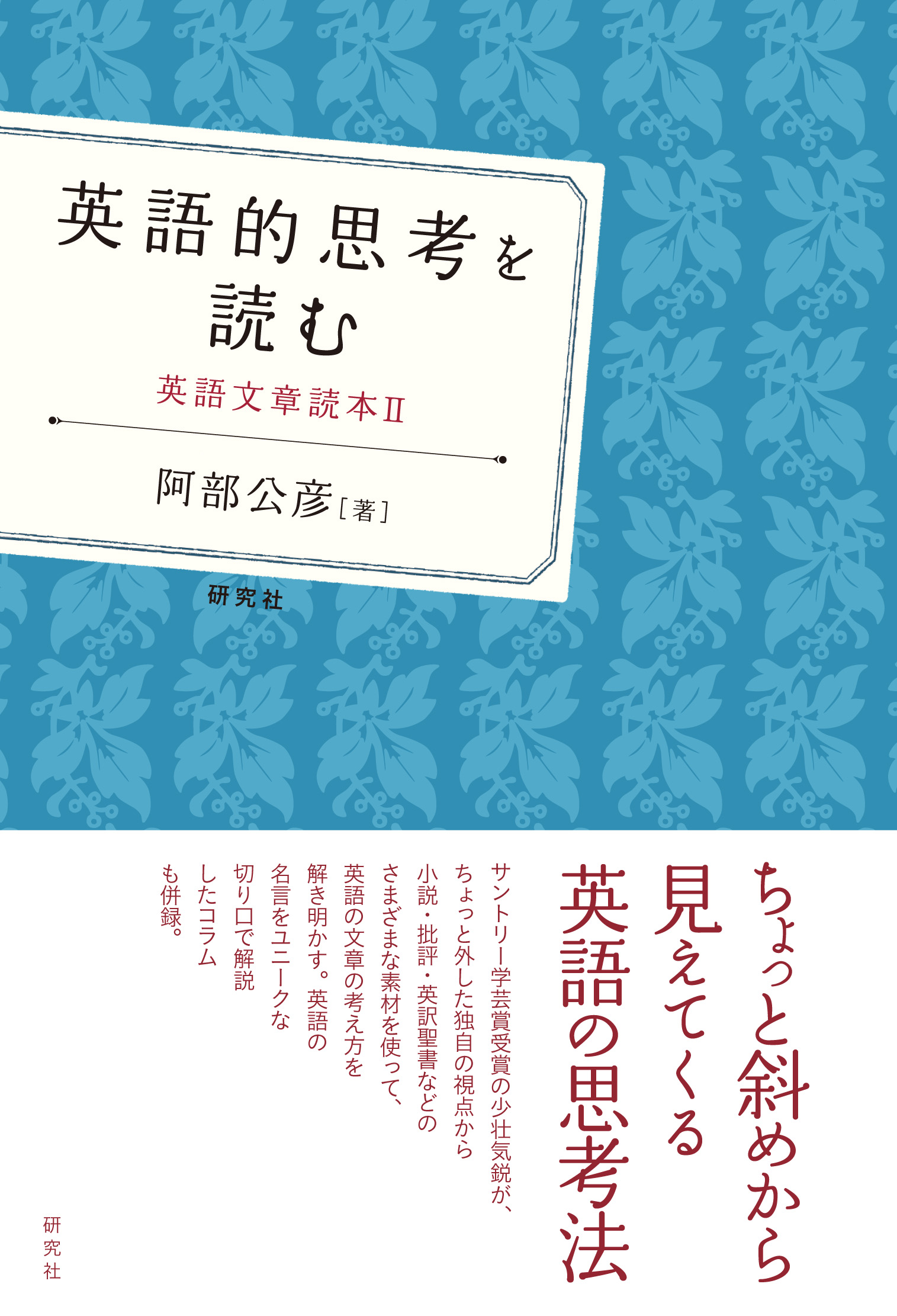
Title
Chuko Shinsho 2407 Eitango no Sekai (An Introduction to English Historical Semantics: Polysemy and Changes in Meaning)
Size
224 pages, paperback pocket edition
Language
Japanese
Released
November 17, 2016
ISBN
978-4-12-102407-7
Published by
CHUOKORON-SHINSHA
Book Info
See Book Availability at Library
Japanese Page
When you open an English dictionary, you very rarely see words with just one meaning; most have several meanings. For example, the word “bar” is shown to have a wide variety of meanings, such as a place of business where alcoholic drinks are served, a long stick, a chocolate bar, a barrier, a drink counter, and a partition in a courtroom. This book examines the relationship between the various meanings of polysemous words by tracing the semantic changes that have occurred throughout history. Understanding the way in which different, seemingly unrelated meanings are in fact connected with each other will provide a fresh perspective for many readers.
Inevitably, when we see a change in meaning, it does not happen in a vacuum: when the meaning changes, the old and new meanings have some associative relationship. For example, in the case of the word “bar,” when the meaning shifts from “long stick” to “chocolate bar,” it is due to a similarity in shape. Additionally, we might not readily see the similarity between a “long, stick-shaped object” and a “barrier,” but we can say that the two are closely connected, in that the former can serve as material for the latter. Furthermore, “barrier” and “drink counter” share the function of partitioning spaces. In the case of “drink counter” and “a place of business where alcoholic drinks are served,” the former is part of the latter.
Once we understand the mechanisms of semantic change, we can also discover the connections between the different meanings of polysemous words that developed as a result of accumulative semantic changes in the past, and this can help us learn and recollect the different meanings of these polysemous words. Thus, this book will demonstrate how knowledge of the way in which semantic changes take place can be useful when learning words with more than one meaning.
So the meanings of words change with time and, as a result, words can become polysemous and take on many meanings; however, why does the meaning change in the first place? We will look at three main causes of semantic changes in this book: factors related to changes in society, factors related to language users, and factors related to the language itself.
Additionally, prepositions, auxiliary verbs, conjunctions, and similar function words have rarely been the focus of attention in the past when discussing polysemous words and issues such as semantic change. For example, the preposition “of” can mean “ownership, affiliation,” as in “the leg of the table,” but it can also mean “separation, deprivation,” as in “I was robbed of my purse” (My purse was stolen). How are these two meanings, at first glance seemingly contradictory, connected to each other? In this book, we will examine the problem of polysemy in function words, in particular how the different meanings/uses are related to each other, from a historical perspective.
In addition to looking at the meanings of words and semantic changes, we can also ask how different words are used to express a given meaning. If we look at a certain semantic domain from a historical perspective, we will often find (investigating the ecology of meaning) a competition for survival between words, for example when newly entered words leave no room for words that were already in existence.
This book will invite you to explore the wonderful world of English words.
(Written by TERASAWA Jun, Professor, Graduate School of Arts and Sciences / 2018)



 Find a book
Find a book





